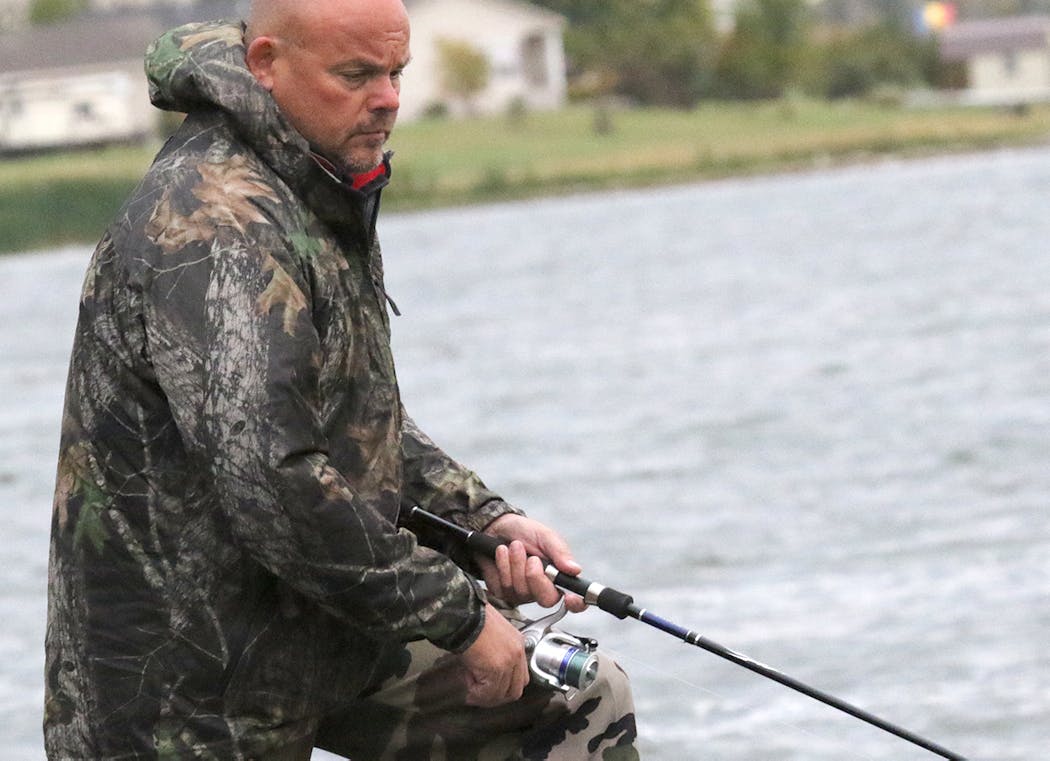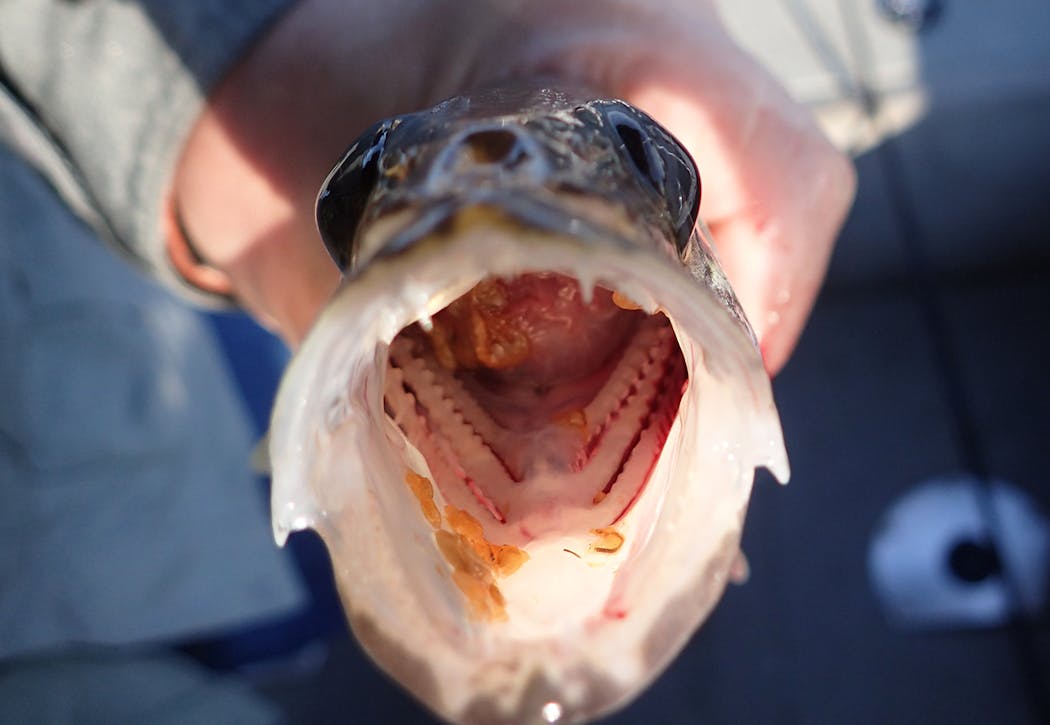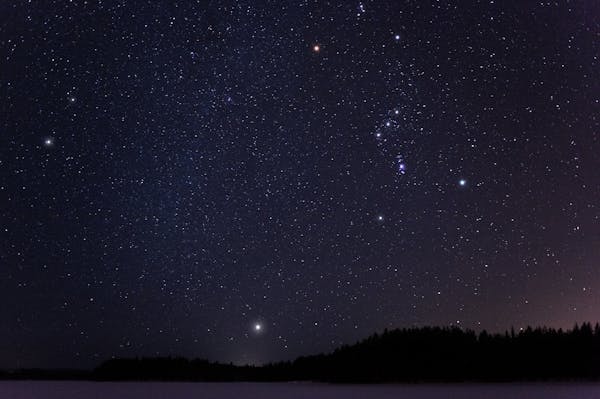DEVILS LAKE, N.D.
A National Guard platoon at Camp Grafton Training Center belted out a cadence in drill practice that echoed across a long bay known as Military Point.
While the soldiers marched and chanted, we caught fish.
Five of us from the Twin Cities and a sixth from Tower, Minn., upheld our fall fishing tradition this year by exploring an offbeat curiosity: Why are more and more Minnesotans fishing in North Dakota and South Dakota?
Nonresident fishing license sales in North Dakota have nearly quadrupled since 1995-96, with 40 percent of the crush coming from its neighbor to the east. South Dakota, too, is enjoying a heavy influx of Minnesota anglers — all during a time of declining fishing license sales in St. Paul.
Tony Rich, a part-time firefighter in Cottage Grove, caters to outdoors customers of all kinds at his Recoil Lodge in Clark, S.D. Six years ago when his investment was new, business was down in months that didn't include hunting or ice fishing.
"March, April, May were slow, and summer fishing was nonexistent for us,'' he said. "Now we're booked 40 weekends a year. The difference is those fishermen.''
Jumbo perch and walleyes are the big tickets — some caught in glorified sloughs that were dry 35 years ago. Rain cycles changed and lakes were born. Others got deeper, absorbing nutrients that sped fish growth and begged for an expansion of fish stocking programs.
Tiny Clark, west of Watertown, also happens to be in the heart of South Dakota's Glacial Lakes region, an area the state Department of Tourism has recently been touting as a sneaky-good fishing destination for nonresidents. Waubay Lake, Bitter Lake, Lake Poinsett and Lake Kampeska are the names you'll hear.
This summer, a repeat customer at Recoil Lodge requested a favor. He asked Rich if he could park his boat in Clark instead of towing it to and from Nebraska seven weekends in a row.
"They're coming from all over,'' Rich said. "People are saying, 'I'm going to go out and fill my cooler with either one of those perfect eating fish' — perch or walleye, or both.' ''
Limits matter
In South Dakota, a license holder can possess 15 perch and four walleyes (only one walleye over 20 inches). In North Dakota, anglers can keep five walleyes a day of any size as long as total possession doesn't exceed 10 walleyes per licensed angler.
Johnnie Candle, a pro walleye tournament angler who also guides on Devils Lake, said the lure of keeping 10 walleyes puts a spell on many nonresidents who have never before fished in the state. Minnesotans make up 25 percent to 35 percent of his guiding business. Many of them figure that if they invest in one big fishing trip per year, they ought to score a fair sum of filets to take home, he said.
"It's come to be known as a top walleye fishery in the U.S., and it's also a unique experience,'' Candle said. "Where else can you cast a jig inside the door of an underwater grain bin?''
Consider that water levels in Devils Lake have risen 20 to 25 feet since a long drought cycle ended in 1993. Now, with each variance of 1 foot of water, the lake grows or shrinks by 10,000 surface acres, Candle said. It is now the size of about 10 Lake Minnetonkas, having swallowed farmland, cabins, railroad beds and bridges.
Taking Candle's advice, we trolled crankbaits with weighted lines over stretches of former shorelines that now lay 22 to 25 feet below the surface. We also jigged around pinch points in the lake, including algae-darkened water beneath a highway overpass. Between our own two boats, unguided, we caught more than 275 smallish walleyes, a couple of nice northerns and loads of rod-shaking white bass.
We commonly fished on the fringes of dead tree groves that were nearly covered by water. Steep, rocky berms lined other parts of the lake, framing vistas the ranged from rolling wooded hills to big sky prairies. Those natural scenes were mashed up with heavy-duty power lines cutting across the lake (we stopped and jigged around the power poles) and the weirdness of sunken roads providing key bottom structures.
Craig Bihrle of the North Dakota Game and Fish Department said walleye fishing on Devils Lake and Lake Sakakawea in western North Dakota might have peaked a couple of years ago when it was common for anglers to catch 80 to 100 walleyes a day, of decent size.
For the 2017-18 fishing season, 25,500 Minnesotans bought licenses to fish in North Dakota, up from around 6,000 in 1995-96. In South Dakota in 2016, 25,000 Minnesotans bought a license, up from only 12,000 as recently as 2010.
Overall, of course, neither of the Dakotas is in Minnesota's league as a fishing state. Here, the DNR annually sells well over 1 million fishing license — but declining participation has been bothersome.
This summer, a professional walleye tournament on Devils Lake yielded walleyes weighing 4 or 5 pounds apiece. But many visitors and guides talk about walleyes that are too small to keep. The catch rates are high — off the charts — but the fish often are dinky.
For every seven to 10 walleyes hoisted from Devils Lake by our group earlier this month, one was a keeper and none of those keepers was more than 17 inches long. In the fish-cleaning house outside our motel in the town of Devils Lake, fellow anglers talked about similar results.
Candle said he'd like to hear from fisheries biologists this winter about the sustainability of walleye fishing on Devils Lake, but no one is overly concerned.
"This summer I would say our fishing was as good as it has ever been,'' Candle said.
Wealth of water
No one dreamed of a fishing boom in the Dakotas in 1993. Heading into that summer, fisheries biologists in North Dakota wrote off more than half of the 180 lakes under their management. But just as soon as they focused on a core of 60 lakes deep enough to avoid winterkills, the rains came. After two prolonged wet cycles, the state now manages 425 fishing waters.
"What we have is big prairie potholes, and they're very productive when they get wet,'' Bihrle said.
Perch, for one, thrive on flooded vegetation. In those lakes, a perch can swell to 2 pounds in four years. Moreover, the abundance of minnows and other forage in the revitalized basins has invited more walleye stocking and boosted natural spawning.
The walleyes in Devils Lake were dripping with evidence. David Whitescarver of Golden Valley noticed a slick of tiny orange scuds suspended on the surface of the live well in our boat. We then noticed the shrimplike macroinvertebrates in the mouths of nearly every walleye we caught. One 13-incher, caught by skipper Scott Ward of Inver Grove Heights, puked up a load of the greasy orange critters onto the video monitor of his fish finder.
Morning air temperatures on Devils Lake over the first full weekend of September were in the 40s and water temps were in the low to mid 60s. The water was green and gave a skunky aroma. There was also the unpleasant distraction of anglers bunching up around us when we were catching fish. Driving there took 6.5 hours.
But the plusses outweighed the minuses when it came to deciding a destination for next year's September walleye excursion. Lodging and minnows were cheap ($2 a scoop!) and we soaked in fall foliage along the south shore of Main Bay. We demystified Devils Lake and chose to return.
Bevy of defensive playmakers are available in Round 2 of the NFL draft after historic offensive run
Twins bring momentum on road despite Angels Stadium struggles

Neal: McCarthy mania sweeps through Vikings draft party

Pretty much a must-win Game 3 for Suns as series moves to Phoenix





